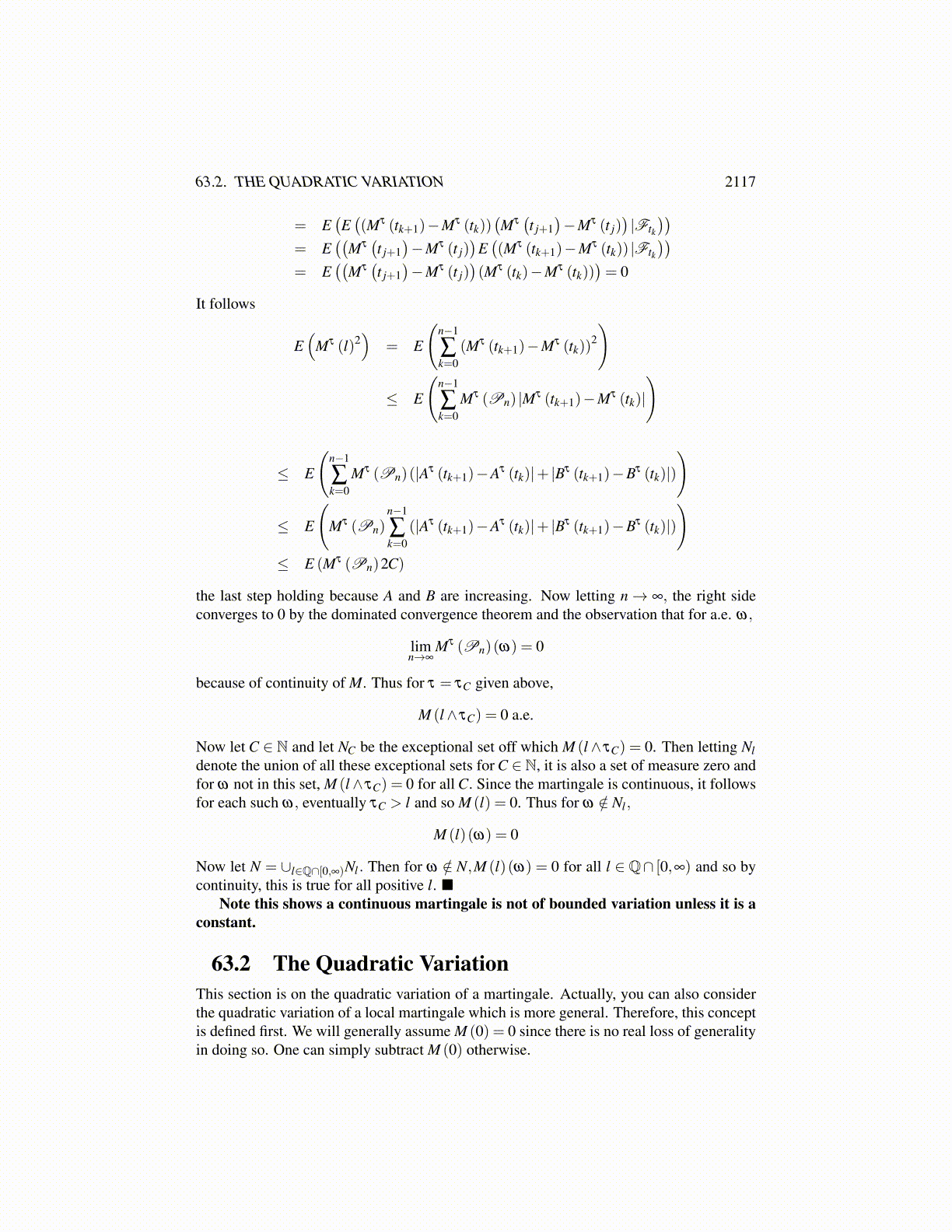
63.1. HOW TO RECOGNIZE A MARTINGALE 2117
Proof: First of all, the sum converges because eventually τk∧t = t. Therefore, for largeenough k, M (τk+1∧ t)−M (τk ∧ t)≡ ∆Mk = 0. Consider first the finite sum, k ≤ q.
E
( q
∑k=0
(ξ k,∆Mk)
)2 (63.1.2)
When the sum is multiplied out, you get mixed terms. Consider one of these mixedterms, j < k
E((ξ k,∆Mk)
(ξ j,∆M j
))Using Corollary 63.1.3 and Doob’s optional sampling theorem, Theorem 60.5.4, this equals
E(
E((ξ k,∆Mk)
(ξ j,∆M j
)|Fτk
))= E
((ξ j,∆M j
)E((ξ k,∆Mk) |Fτk
))= E
((ξ j,∆M j
)(ξ k,E
(M (τk+1∧ t)−M (τk ∧ t) |Fτk
)))= E
((ξ j,∆M j
)(ξ k,0)
)= 0
Note that in using the optional sampling theorem, the stopping time τk+1∧ t is bounded.Therefore, the only terms which survive in 63.1.2 are the non mixed terms and so this
expression reduces to
q
∑k=0
E (ξ k,∆Mk)2 ≤C2
q
∑k=0
E(||∆Mk||2
)
=C2q
∑k=0
E(||M (τk+1∧ t)−M (τk ∧ t)||2
)
= C2q
∑k=0
E(||M (τk+1∧ t)||2
)+E
(||M (τk ∧ t)||2
)−2E ((M (τk ∧ t) ,M (τk+1∧ t))) (63.1.3)
Consider the term E ((M (τk ∧ t) ,M (τk+1∧ t))) . By Doob’s optional sampling theorem formartingales and Corollary 63.1.3 again, this equals
E(E((M (τk ∧ t) ,M (τk+1∧ t)) |Fτk
))= E
((M (τk ∧ t) ,E
(M (τk+1∧ t) |Fτk
)))= E ((M (τk ∧ t) ,M (τk+1∧ t ∧ τk)))
= E(||M (τk ∧ t)||2
)It follows 63.1.3 equals
C2q
∑k=0
E(||M (τk+1∧ t)||2
)−E
(||M (τk ∧ t)||2
)≤C2E
(||M (t)||2
).